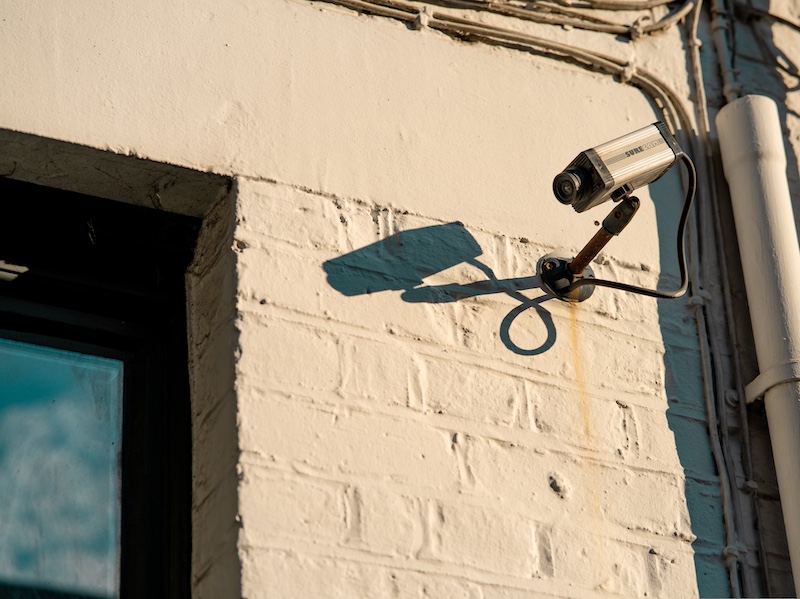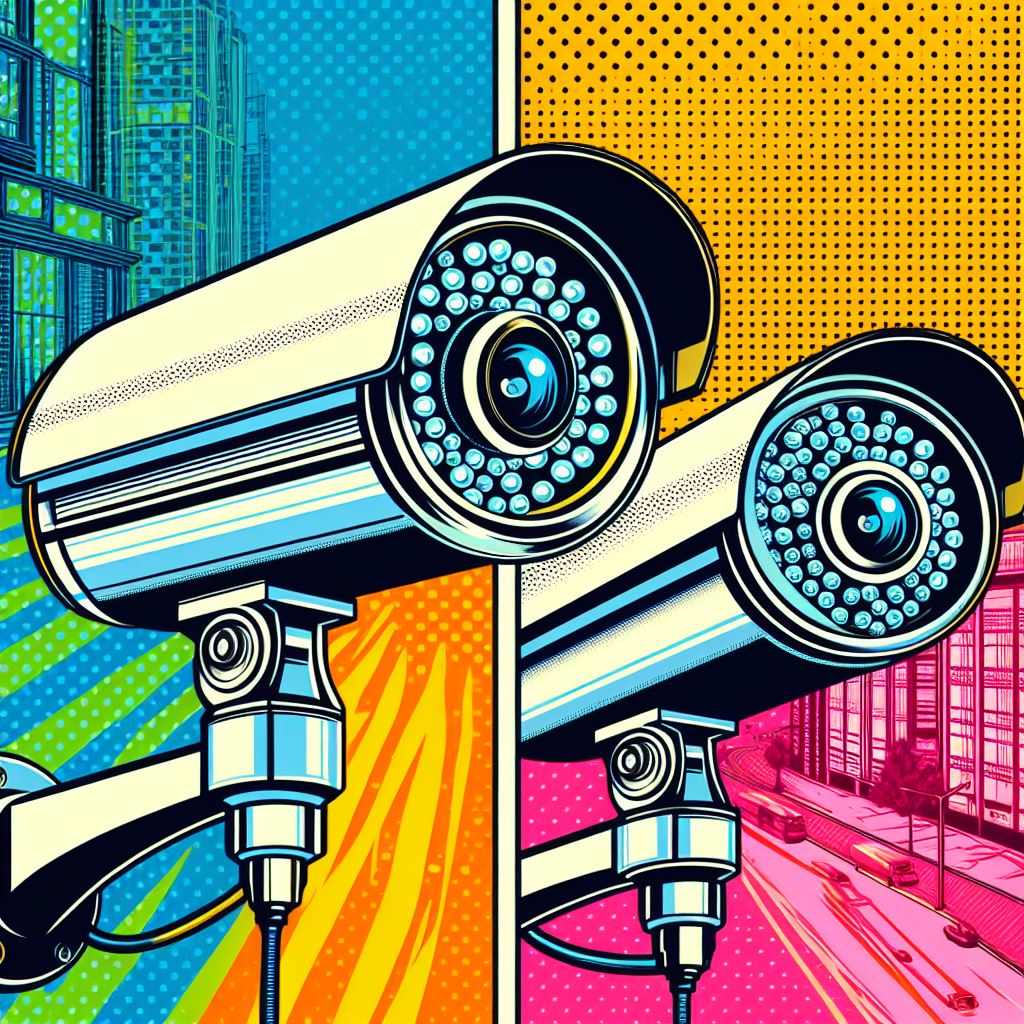In today’s rapidly changing world, personal and property security has become more critical than ever before. As a result, many individuals and businesses are turning to Closed-Circuit Television (CCTV) systems to monitor their premises and enhance their security. However, the effectiveness of your CCTV camera system largely depends on where you place the cameras.
Let’s take a look into how you can optimise your security system, and protect what you value most.
The Importance of Strategic CCTV Camera Placement
Before we dive into the specifics, let’s understand why camera placement is so critical:
Deterrence Factor
Strategically positioned cameras act as a visual deterrent to potential intruders. When individuals see the blinking red light of a CCTV camera, they know they are being watched and, as such, are less likely to engage in criminal activities.
Surveillance Coverage
The primary purpose of CCTV cameras is to monitor and capture events as they happen. Placing cameras in key areas ensures comprehensive surveillance coverage. Ensuring there are no ‘blind spots’ gives you the peace of mind that your business is 100% covered – in the event of anything happening.
Evidentiary Value
In the unfortunate event of a security breach, or an incident occuring, the recorded footage from your CCTV cameras can serve as valuable evidence for investigations and legal proceedings.
Understanding the exact sequence of events, the reasons behind them, and identifying potential solutions for the future becomes significantly more accessible when you have a firsthand view (that includes hearing what’s going on) of precisely what transpired.
Now, let’s explore the best locations for setting up your CCTV cameras and some additional tips and tricks to ensure you are getting the most out of your CCTV system.
The Most Crucial Points
The most crucial locations to cover are the entry and exit points of your property. These include the front and back doors, garage doors, and any other accessible openings. Positioning cameras at these points ensures that you capture the faces of potential intruders and are able to monitor who enters and exits.
Tip:
- Place CCTV cameras above eye level to prevent tampering or vandalism.
- Use weatherproof and vandal-resistant cameras for outdoor entry points.

Driveway and Parking Areas
For homeowners, monitoring the driveway and parking areas is essential. You should install cameras to deter car thefts and to provide evidence in case of accidents or break-ins. Because vehicles are among the most expensive assets that people have – and are commonly left in plain view of any passersby. Having a camera covering your vehicle at all times gives you the peace of mind that if anything happens to or around your car or motorbike – you’ll be the first to know, and you’ll have evidence if needed in the future.
Helpful Tips:
- Use wide-angle or fish-eye lenses for a broader field of view.
- Position cameras at a height that captures both vehicles and faces clearly, ensuring that you are able to see around the sides of the vehicle.
- Make sure that any entrance point people will most commonly enter by is covered.
Perimeter and Fencing
When it comes to creating a protective barrier around your property, consider installing cameras along the perimeter and near any fencing. This not only discourages trespassers but also records their activities if they attempt to breach your boundaries.
Helpful Tips:
- Opt for infrared (IR) cameras for clear nighttime footage.
- Ensure cameras are discreet to avoid detection.
Backyard and Outdoor Spaces
Backyards and outdoor spaces are often overlooked but can hold some of your house’s most valuable things – outdoor TVs, BBQs, and tools, making them prime targets for theft, vandalism, or unauthorised entry. Install CCTV cameras to monitor these areas, especially if you have valuable outdoor equipment or recreational facilities.
Helpful Tips:
- Conceal outdoor cameras within landscaping for a natural look.
- Consider motion-activated floodlights to improve visibility, as well as an extra deterrent, lighting up anybody who steps foot within their vision.
Windows
Placing cameras near ground-level windows or windows that are easy to access can provide additional coverage and deter potential burglars.
Windows are often the easiest way for an intruder to enter your locked house or business – as doors are often much more secured, while windows may be left open by accident. Ensure the cameras have a clear line of sight to capture any suspicious activity.
Helpful Tips:
- Use low-light cameras to capture details in dimly lit areas.
- Pair cameras with motion detection for more effective surveillance.
- Before you leave for the day, use the cameras to double-check check you haven’t left any windows ajar accidentally – a simple mistake could be all an intruder needs!
Common Areas
For businesses, placing CCTV cameras in common gathering areas such as lobbies, hallways, and waiting rooms is crucial. It ensures the safety of employees and customers and can be a deterrent against theft or unruly behaviour.
Helpful Tips:
- Use dome cameras for a discreet and modern look – such as this Hikvision one, which also obscures which way the camera is facing, creating the illusion of total coverage.
- Ensure proper lighting for clear footage in common areas.
Cash Registers and Entrances
In retail environments, cameras should be placed near cash registers and entrance/exit points. Placing cameras near these high-value locations discourages both customer and employee theft while providing evidence in the event of fraudulent transactions or robberies.
Helpful Tips:
- Use cameras with wide dynamic range (WDR) for balanced lighting in high-contrast areas.
- Employ network video recorders (NVRs) for easy storage and retrieval of footage.
- Make sure that any cameras are able to see the screens of registers – in order to see what is going on at any time.
Stairwells and Elevators
In multi-story buildings, stairwells and elevators can be vulnerable areas. Install cameras here to monitor traffic and prevent potential security threats.
Helpful Tips:
- Use high-resolution cameras for clear footage in confined spaces.
- Ensure cameras are tamper-resistant in public areas.
High-Value Areas
Identify high-value areas within your property, such as safes, server rooms, or storage spaces, and place cameras strategically to safeguard these critical assets.
Helpful Tips:
- Consider using covert cameras or mini cameras for discrete surveillance.
- Set up alarms that trigger when someone enters these areas.
Blind Spots and Shadows
It’s important to pay special attention to blind spots and areas with poor lighting. These are where intruders might try to hide. Additional lighting combined with well-placed cameras can eliminate such vulnerabilities.
Helpful Tips:
- Install motion-activated lights in dark areas to deter intruders.
- Use wide-angle cameras to reduce blind spots.
- Use dome cameras to obscure the camera’s field of view from public eyesight, and make it harder to figure out security blind spots.
License Plate Recognition (LPR) CCTV Cameras
Consider using LPR cameras near entrances and exits to capture license plates. These can be invaluable for tracking the movements of vehicles in and out of your property.
Helpful Tips:
- Ensure the camera’s positioning offers a clear view of license plates.
- Connect LPR cameras to a dedicated database for license plate recognition.
- Especially useful for parking garages, or anywhere that you want only certain vehicles getting in, such as a company parking lot.

Additional Tips and Tricks
In addition to strategic camera placement, consider these additional tips and tricks to optimise your CCTV system:
Use the Right Cameras
Select cameras that match your specific needs. Dome cameras are discreet and blend well in common areas, while bullet cameras are more visible and act as deterrents. PTZ (Pan-Tilt-Zoom) cameras offer the flexibility to cover a larger area with a single camera.
For some more information on features to look out for, take a look at this Consumer article.
Adequate Lighting
Ensure proper lighting for your cameras to capture clear footage. In low-light or nighttime areas, consider adding motion-activated lights or using cameras with IR capabilities.
Network Connectivity
Connect your CCTV cameras to a network for remote monitoring and storage. This allows you to access live feeds and recorded footage from anywhere, enhancing your system’s versatility.
Regular Maintenance
Perform routine maintenance to keep your cameras in top condition. Clean lenses, check for loose connections and update firmware to ensure optimal performance.
Compliance with Regulations
Be aware of local laws and regulations regarding CCTV camera usage. Comply with privacy laws and obtain any necessary permits. Here’s a link from the New Zealand Privacy Commission outlining the dos and don’ts of this
Secure Your System
Protect your CCTV system against hacking by using strong passwords and encryption. Also, ensure that you’re regularly updating your system’s software to patch security vulnerabilities.
Keep Your CCTV Cameras Easy To Clean
Make sure your cameras are within reach, or that you have access to be able to clean the lens easily. Check out our guide on all you need to know about exterior house washing in Hamilton, as well as this guide on CCTV maintenance for beginners, to make sure you are helping your cameras last as long as possible.
To Summarise:
Strategic CCTV camera placement is the cornerstone of a robust security system. By considering the key locations mentioned in this guide and implementing the additional tips and tricks, you can maximise the effectiveness of your CCTV cameras.
Remember that a well-thought-out and well-maintained CCTV system not only enhances security but also provides peace of mind for you and your family, your business and for your customers.
Stay informed about the latest advancements in CCTV technology to keep your security measures up-to-date and continue to protect what matters most.
